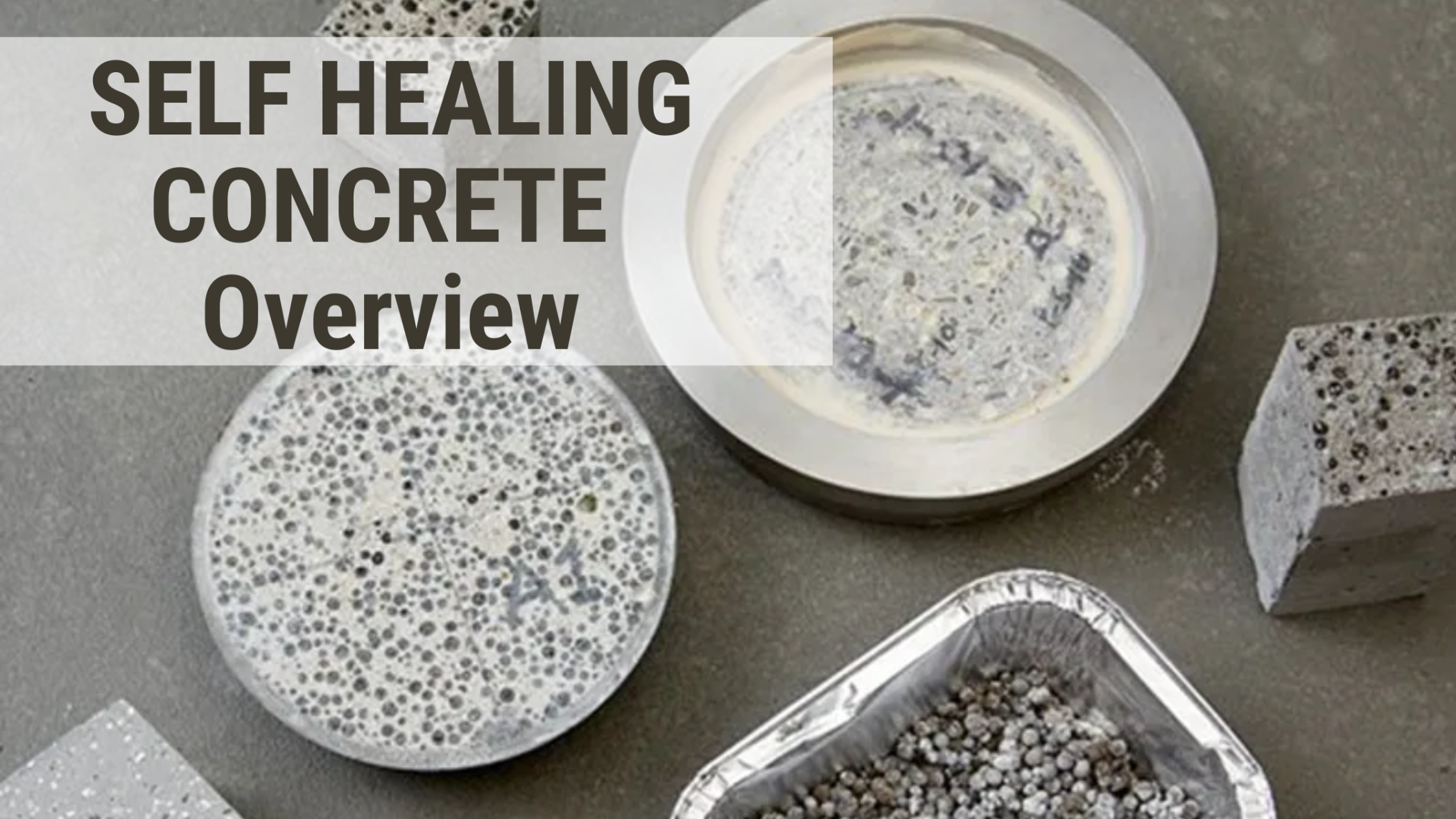Concrete is one of the most widely used building materials in the world, essential for constructing everything from roads and bridges to buildings. However, over time, traditional concrete is prone to cracking due to stress, weather conditions, and regular wear and tear. These cracks weaken structures, increase maintenance costs, and can even lead to structural failures if left untreated. Traditional repair methods are often labor-intensive, costly, and environmentally taxing due to the need for additional resources.
Enter Self-healing concrete!!
Self-healing concrete offers a groundbreaking solution to these issues by automatically repairing cracks when they appear, thus extending the life of structures, reducing repair needs, and offering greater durability than conventional concrete. This innovative material could transform the construction industry, making buildings and infrastructure safer, more sustainable, and easier to maintain over time.
How Does Self-Healing Concrete Work?
Self-healing concrete can reduce the risk of structural collapse by healing cracks before they compromise the integrity of a building.
The self-healing process typically involves special bacteria, crystals, or chemicals added to the concrete mix. When a crack forms, moisture and oxygen enter it, triggering these added materials to start the healing process, filling the crack with new material.
There are two common types of self-healing mechanisms:
- Bacterial-Based Healing: In this type, bacteria that produce limestone (calcium carbonate) are embedded in the concrete. When cracks allow water to seep in, the bacteria activate, producing limestone to fill the gap.
- Chemical-Based Healing: Here, microcapsules filled with special chemicals, such as epoxy or silica gel, are added to the concrete. When a crack forms, the capsules break, releasing the chemicals to fill the crack and bond the concrete back together.
Applications of Self-Healing Concrete
Now let us look at some of the applications of self-healing concrete.
Self-healing concrete has many potential applications, especially in areas where durability and safety are critical, for instance:
- Bridges and Highways: Constant exposure to heavy traffic and weather makes roads and bridges prone to cracks. Self-healing concrete can help minimize these issues, extending their lifespan.
- Buildings: Skyscrapers, commercial buildings, and residential apartments could benefit from self-healing concrete, as it reduces the need for frequent repairs and ensures safety.
- Water-Related Structures: Dams, tunnels, and canals are at risk of water seepage and cracking over time. Self-healing concrete can help in preventing water from entering the cracks and causing further damage.
- Marine Structures: Structures near the coast or in seawater are exposed to high moisture and salt, leading to concrete damage. Self-healing concrete can offer extra protection in these environments.
- Some types of self-healing concrete can incorporate fire-retardant materials to help limit the spread of fire.
Pros and Cons of Self-Healing Concrete
| Advantages | Disadvantages |
| Reduced Maintenance Costs: Self-healing concrete can last much longer than conventional concrete. It thus helps extend the life of structures by reducing the need for repairs. This translates to cost savings over time. | High Initial Cost: Self-healing concrete is more expensive than regular concrete due to the technology and materials involved. |
| Improved Durability: Since cracks can compromise a structure’s strength, self-healing concrete improves durability by sealing cracks before they can grow. | Limited Healing Capacity: Self-healing concrete is typically effective for smaller cracks, usually less than 0.8 mm. Larger cracks may still require manual repair. |
| Environmental Benefits: With less need for frequent repairs and rebuilding, self-healing concrete helps reduce the carbon footprint, as it lowers the demand for new materials and construction. | Slower Healing Process: In certain types of self-healing concrete, especially bacterial-based ones, the healing process may take weeks or months, depending on the environmental conditions. |
| Enhanced Safety: Cracks in concrete can lead to structural instability over time. By minimizing these risks, self-healing concrete can make buildings, roads, and bridges safer. | Dependency on Environmental Factors: The self-healing process requires moisture, which might be challenging in very dry climates. |
Future of Self-Healing Concrete Under Indian Conditions
India’s infrastructure is continuously developing, with projects ranging from highways and bridges to residential buildings. Self healing concrete could play a crucial role in the country, helping to build stronger, more durable structures that withstand India’s diverse climatic conditions. For instance:
- Monsoon-Heavy Regions: In areas that experience heavy rainfall, especially in Kerala’s climatic conditions. Self-healing concrete could help prevent water damage and maintain structural strength.
- Urban and Industrial Regions: In cities where pollution levels are high. Self-healing concrete could protect structures from pollution-induced cracks and corrosion.
- Rural Infrastructure: Self healing concrete could improve the longevity of roads and bridges in rural areas, reducing the frequency of repairs and costs.
One of the main obstacles to the widespread use of self-healing concrete in India is the cost. On average, self-healing concrete costs two to three times more than regular concrete. This is due to the added materials like bacteria, microcapsules, and special chemicals. This increase can make it difficult for developers, especially in public infrastructure projects where budget constraints are tight.
For self healing concrete to become more viable in India, research is needed to develop cost-effective methods of production, possibly using local materials or alternative healing agents. Scaling up production and continued innovation in materials science could also help reduce costs over time.
Conclusion
Self-healing concrete represents a promising innovation in construction materials, offering improved durability, reduced maintenance, and environmental benefits. While it faces challenges due to high initial costs and dependency on environmental factors, self-healing concrete has significant potential in India’s infrastructure development. As research continues and production costs decrease, self healing concrete may become a practical solution for creating safer and longer-lasting structures in India.
